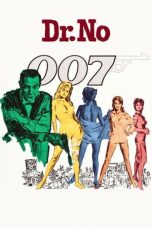- Source: Disaster
- Source: Disaster!
A disaster is an event that causes serious harm to people, buildings, economies, or the environment, and the affected community cannot handle it alone. Natural disasters like avalanches, floods, earthquakes, and wildfires are caused by natural hazards. Human-made disasters like oil spills, terrorist attacks and power outages are caused by people. Nowadays, it is hard to separate natural and human-made disasters because human actions can make natural disasters worse. Climate change also affects how often disasters due to extreme weather hazards happen.
Disasters usually hit people in developing countries harder than people in wealthy countries. Over 95% of deaths from disasters happen in low-income countries, and those countries lose a lot more money compared to richer countries. For example, the damage from natural disasters is 20 times greater in developing countries than in industrialized countries. This is because low-income countries often do not have well-built buildings or good plans to handle emergencies.
To reduce the damage from disasters, it is important to be prepared and have fit for purpose infrastructure. Disaster risk reduction (DRR) aims to make communities stronger and better prepared to handle disasters. It focuses on actions to reduce risk before a disaster occurs, rather than on response and recovery after the event. DRR and climate change adaptation measures are similar in that they aim to reduce vulnerability of people and places to natural hazards.
When a disaster happens, the response includes actions like warning and evacuating people, rescuing those in danger, and quickly providing food, shelter, and medical care. The goal is to save lives and help people recover as quickly as possible. In some cases, national or international help may be needed to support recovery. This can happen, for example, through the work of humanitarian organizations.
Definitions
The UN defines a disaster as "a serious disruption of the functioning of a community or a society at any scale".: 13 It results from hazards in places where people live in exposed or vulnerable conditions. Some human failures make communities vulnerable to climate hazards. These are poor planning or development, or a lack of preparation.
Disasters are events that have an effect on people. A hazard that overwhelms or injures a community is considered a disaster. The international disaster database EM-DAT defines a disaster as “a situation or event that overwhelms local capacity, necessitating a request for external assistance at the national or international level; it is an unforeseen and often sudden event that causes great damage, destruction and human suffering.” The effects of a disaster include all human, material, economic and environmental losses and impacts.: 13
UNDRO (1984) defined a disaster in a more qualitative fashion as: "an event, concentrated in time and space, in which a community undergoes severe danger and incurs such losses to its members and physical appurtenances that the social structure is disrupted and the fulfilment of all or some of the essential functions of the society is prevented." Like other definitions this looks beyond the social aspects of the disaster impacts. It also focuses on losses. This raises the need for emergency response as an aspect of the disaster. It does not set out quantitative thresholds or scales for damage, death, or injury.
A study in 1969 defined major disasters as conforming to the following criteria, based on the amount of deaths or damage: At least 100 people dead, at least 100 people injured, or at least $1 million damage. This definition includes indirect losses of life caused after the initial onset of the disaster. These could be the effects of diseases such as cholera or dysentery arising from the disaster. This definition is still commonly used. However it is limited to the number of deaths, injuries, and damage in money terms.
Types
The scale of a disaster matters. Small-scale disasters only affect local communities but need help beyond the affected community. Large-scale disasters affect wider society and need national or international help.
It is usual to divide disasters into natural or human-made. Recently the divide between natural, man-made and man-accelerated disasters has become harder to draw. Some manufactured disasters such as smog and acid rain have been wrongly attributed to nature.
= Related to natural hazards
=Disasters with links to natural hazards are commonly called natural disasters. However experts have questioned this term for a long time.
= Unrelated to natural hazards
=Human-made disasters are serious harmful events caused by human actions and social processes. Technological hazards also fall into this category. That is because they result in human-instigated disasters. Human-made hazards are sometimes called anthropogenic hazards.: 18 Examples include criminality, social unrest, crowd crushes, fires, transport accidents, industrial accidents, power outages, oil spills, terrorist attacks, and nuclear explosions/nuclear radiation. Catastrophic climate change, nuclear war, and bioterrorism also fall into this category.
Climate change and environmental degradation are sometimes called socio-natural hazards. These are hazards involving a combination of both natural and human factors. : 18 All disasters can be regarded as human-made, because of failure to introduce the right emergency management measures.
Famines may be caused locally by drought, flood, fire or pestilence. In modern times there is plenty of food globally. Long-lasting local shortages are generally due to government mismanagement, violent conflict, or an economic system that does not distribute food where needed.
= Others
=Complex disasters, where there is no single root cause, are more common in developing countries. A specific hazard may also spawn a secondary disaster that increases the impact. A classic example is an earthquake that causes a tsunami. This results in coastal flooding, damaging a nuclear power plant on the coast. The Fukushima nuclear disaster is a case in point. Experts examine these cascading events to see how risks and impacts can amplify and spread. This is particularly important given the increase in climate risks.: 143–145
Some researchers distinguish between recurring events like seasonal flooding and unpredictable one-off events. Recurring events often carry an estimate of how often they occur. Experts call this the return period.
Impacts
The effects of a disaster include all human, material, economic and environmental losses and impacts.: 13
The Emergency Events Database (EM-DAT) records statistics about disasters related to natural hazards. For 2023, EM-DAT recorded 399 disasters, which was higher than the 20-year average of 369.
= Economic losses
=Between 2016 and 2020 the total reported economic losses amounted to $293 billion. This figure is likely to be an underestimation. It is very challenging to measure the costs of disasters accurately, and many countries lack the resources and technical capacity to do so.: 50 Over the 40-year period from 1980 to 2020 losses were estimated at $5.2 trillion.
= Human impacts
=In 2023, natural hazard-related disasters resulted in 86,473 fatalities and affected 93.1 million people. Whilst the number of deaths was much higher than the 20-year average of 64,148, the number affected was much lower than the 20-year average of 175.5 million.
According to a UN report, 91% of deaths from hazards from 1970 to 2019 occurred in developing countries. These countries already have higher vulnerability and lower resilience to these events, which exacerbates the effects of the hazards.
= Effects of climate change
=Hazards such as droughts, floods, and cyclones are naturally occurring phenomena. However, climate change has caused these hazards to become more unreliable, frequent and severe. They thus contribute to disaster risks. Countries contributing most to climate change are often at the lowest risk of feeling the consequences. As of 2019, countries with the highest vulnerability per capita release the lowest amount of emissions per capita, and yet still experience the most heightened droughts and extreme precipitation.
Prevention and response
= Disaster risk reduction
== Disaster response
=Etymology
The word disaster is derived from Middle French désastre which comes from Old Italian disastro. This in turn comes from the Ancient Greek pejorative prefix δυσ- (dus-) "bad" and ἀστήρ (aster), "star". So the word disaster ("bad star" in Greek) comes from an astrological sense of a calamity blamed on the position of planets.
See also
Act of God – Natural disaster outside human control
Emergency management – Dealing with all humanitarian aspects of emergencies
List of accidents and disasters by death toll
Lists of disasters
References
External links
ReliefWeb of the United Nations Office for the Coordination of Humanitarian Affairs –ReliefWeb
United Nations Office for Disaster Risk Reduction – UNDRR
Global Disaster Alert and Coordination System – a joint initiative of the United Nations Office for the Coordination of Humanitarian Affairs (OCHA) and the European Commission
Disaster!: A Major Motion Picture Ride...Starring You! was a dark ride attraction at Universal Studios Florida. Set on a soundstage of a fictitious movie company, Disaster! was based on the park's former Earthquake: The Big One ride, which comically illustrates how special effects are filmed for use in movies. The attraction's climax cast the riders as movie extras for a movie final scene involving an earthquake in a subway station. Using high-speed editing techniques, the riders got to see themselves in the form of a movie trailer that included film sequences shot throughout the attraction's pre-show and main ride.
In August 2015, Universal announced that the attraction would close on September 8, 2015, to make way for Fast & Furious: Supercharged, based on the blockbuster film franchise.
Attraction history
Earthquake: The Big One was one of Universal Studios Florida's original attractions, opening with the park on June 7, 1990. While the attraction was principally based on a portion of the Universal Studios Hollywood's Studio Tour, its main inspiration came from the 1974 disaster film epic Earthquake. Over the years, however, fewer and fewer guests knew about the film referenced, so as part of a renovation project, Universal Studios detached the attraction from any existing film property and instead crafted a fictional premise around it by reinventing its storyline.
On November 5, 2007, Universal Orlando confirmed the refurbishment on the day that the original Earthquake attraction was permanently closed.
The attraction reconstruction itself took 1 month and 3 weeks. Among the changes include a new pre-show experience, and new ride elements that were not in the Earthquake! attraction.
The attraction started previews on December 23, 2007, after some technical problems delayed the actual opening. The grand opening took place on January 17, 2008. It was hosted by Universal Orlando Resort President Bill Davis, with Dwayne "The Rock" Johnson making a guest appearance.
On August 25, 2015, Universal officials announced that Disaster! would be closing on September 7, 2015, to make way for a new attraction based on the Fast & Furious film franchise that would open in 2018. The Earthquake: The Big One attraction on the Studio Tour at Universal Studios Hollywood continues to operate under the original title. However, the movie on which it is based is now rarely referenced.
= Halloween Horror Nights
=The Disaster!/Earthquake: The Big One overflow queue has been used on and off from 1994 through the rides closure to make a haunted house attraction at Halloween Horror Nights. They used it to make the following:
"Dungeon of Terror" (HHN IV)
"Crypt Keeper's Dungeon of Terror" (HHN V)
"Crypt Keeper's Studio Tour of Terror" (HHN VI)
"Tombs of Terror" (HHN VII)
"S.S. Frightanic: Carnage Crew" (HHN VIII)
"S.S. Frightanic: Fear in First Class" (HHN VIII)
"The Mummy" (HHN IX)
"Doomsday" (HHN IX)
"Universal Classic Monster Mania" (HHN X)
"Dark Torment" (HHN X)
"The Mummy Returns: The Curse Continues" (HHN XI)
"RUN" (HHN XI)
"Deadtropolis" (HHN XIV)
"RUN: Hostile Territory" (HHN XVI)
"The Texas Chainsaw Massacre: Flesh Wounds" (HHN XVII)
"Doomsday" (HHN XVIII, Unrelated to HHN IX's "Doomsday" Maze)
"Leave it to Cleaver" (HHN XIX) (Sponsored by Fangoria)
"ZombieGeddon" (HHN XX)
"H.R. Bloodengutz Presents: Holidays of Horror" (HHN XXI)
"The Walking Dead" (HHN XXII)
"Havoc2: Derailed" (HHN XXIII)
"Giggles & Gore Inc." (HHN XXIV)
"RUN: Blood, Sweat and Fears" (HHN XXV)
Story
Disaster! is an interactive attraction following the storyline of a fictional movie studio run by Frank Kincaid (played by Christopher Walken). The studio is going bankrupt and needs visitors to act as extras for key insert scenes. In helping Kincaid complete his film, the visitors are then asked to be a part of the finale sequence involving an earthquake.
= Queue
=Disaster's queue displayed for movie props from fictional Disaster Studios films, including a Meteor-Struck House from Apocageddon, a torn apart plane from 300 Knots Landing, a mechanical shark from Das Schurke (the head from Bruce, one of the mechanical sharks from the Jaws attraction), and a giant tank being consumed by the tentacles from Super Mega Ultra Atomic Chaos. Guests were also greeted to Disaster Studios with a giant mural of destroyed Los Angeles, introducing Frank Kincaid as the "Master of Mayhem."
Guests were introduced to Lonnie, an assistant director who cast guests for scenes that he needed to be shot in the soundstages. Guests were then taken into a screening room where Kincaid described his brand of film-making. He then asked visitors to help him complete his film. After a speech, guests were ushered into another soundstage where the scenes were shot. Audience members that were pre-picked to be involved in the scenes were brought out to perform, and scenes are filmed where a child jumped from one spot to another, villainous lab workers were hit by styrofoam rocks, a man flying, a man being thrown around in a flood, a woman screaming, a grandmother hoeing, and people noticing an awful smell with the song "That Smell" in the background which actually creates a scene of several bugs and insects buzzing around them, as if they’re trying to swat them away, later in the final cut of the film. Kincaid appeared on a screen and invited guests to take part in his finale that was being shot next door.
= Ride
=Guests enter a subway station, modeled after BART's West Oakland Station, where they board a subway train (an obvious homage to "Earthquake: The Big One", which this ride replaced). Small plasma screens on the train direct guests on the reactions needed to successfully shoot the scene. Departing the station, guests travel beneath the bay and soon arrive at the Embarcadero subway station. Shortly after arriving at the station, the lights in the station start to flicker, the second unit director tells the people over the intercom that it's just a slight tremor and that there's no problem. The station then goes dark, then the train is shaken by a violent earthquake. The entire station is seemingly destroyed as large cracks form in the station platforms, sections of the roof collapse, a gasoline tanker falls through the ceiling and bursts into flames, another subway train enters the station and derails, and a flash flood rushes down the stairs and into the station. These effects and props are recycled from the previous ride that inhabited the space, Earthquake: The Big One, with some new effects added in. Following the sequence, the train heads back to the West Oakland station, and the TV monitors on the train show the trailer for the faux film "Mutha Nature". The trailer, which spoofs disaster films in general, stars an uncredited Dwayne Johnson as a park ranger who tries to save lives during a series of ecological disasters such as earthquakes, floods, and hurricanes. Green screen technology allows the trailer to incorporate scenes shot by guests, under the guidance of Universal Orlando staff.
Cast
Christopher Walken as Frank Kincaid The owner, CEO, Head Director, Writer, Producer etc. of Disaster! Studios. When an accident on the set of his newest film Mutha Nature causes its stars to go to rehab, Kincaid casts park guests as his new actors. Alec Baldwin was originally considered for the role of Frank Kincaid.
Dwayne "The Rock" Johnson as the Star of Mutha Nature Although given no official character name, Johnson is seen as a lead role in Mutha Nature where he plays a park ranger who must save the world from hordes of disasters caused by an evil corporation.
Universal Studios Florida Entertainment Team Member as Lonnie, Kincaid's Assistant Director. When all of Kincaid's actors get sent to rehab during the filming of Mutha Nature, Lonnie is sent by Kincaid to cast new actors for his film. Lonnie is the main host of the attraction's pre-show.
Universal Studios Florida Operations Team Members as Production Assistants the employees who work at Disaster! Studios for Kincaid. They are seen in almost every part of the attraction. Among the top Production Assistants in the all-time seven year history of Disaster! Studios was Luis Vielma.
Matthew Walker as Mikey Kincaid's second unit assistant director for Mutha Nature. Mikey is seen twice in the entirety of the ride; in the second pre-show room working as a projectionist in a projectionist's booth, and throughout the main ride portion. Mikey is the main host of the ride. Walker had previously worked on another Universal Studios-related project, Child's Play 3.
Technology
Disaster! used Musion Eyeliner technology for the Frank Kincaid character. This technology uses techniques similar to the Pepper's Ghost effect that has been used in attractions such as Haunted Mansion and The Twilight Zone Tower of Terror at Walt Disney World Resort, as well as Universal's own Harry Potter and the Forbidden Journey at Islands of Adventure. Musion projects a high definition image onto the floor and onto a giant piece of acrylic glass, giving it the illusion that it is lifelike. It also gives the ability to interact with objects on stage, as can be seen in many parts of the attraction.
Disaster! also utilized real-time editing to help produce the movie trailer for Mutha Nature that was shown at the end of the ride. Real-time editing captures shots and wirelessly transmits them onto the Disaster! ride vehicle, which then inserts those shots into the trailer.
In media
Disaster! appeared in the 2015 film Sharknado 3: Oh Hell No!.
The subway station section of the attraction served as the Arena Rapid Transit System on the martial arts television show WMAC Masters.
See also
Universal Studios Florida
Earthquake: The Big One
Disaster films
References
External links
Disaster!: A Major Motion Picture Ride...Starring You! at Universal Orlando Resort
Disaster! A Major Motion Picture Ride...Starring You! at IMDb
Kata Kunci Pencarian:
- Bencana Chernobyl
- Seconds From Disaster
- Pemulihan bencana
- Beautiful Disaster (film)
- Disaster Monitoring Constellation
- Bencana
- Wedding for Disaster
- Disaster Movie
- Bencana alam
- Memories of a Beautiful Disaster
- Disaster
- Chernobyl disaster
- Natural disaster
- Hindenburg disaster
- Disaster!
- Emergency management
- Bhopal disaster
- Aberfan disaster
- Hillsborough disaster
- It's a Disaster
- 1
- 2
Something in the Water (2024)
Dr. No (1962)
Mission: Impossible – Ghost Protocol (2011)
Spider-Man: Far From Home (2019)
No More Posts Available.
No more pages to load.














